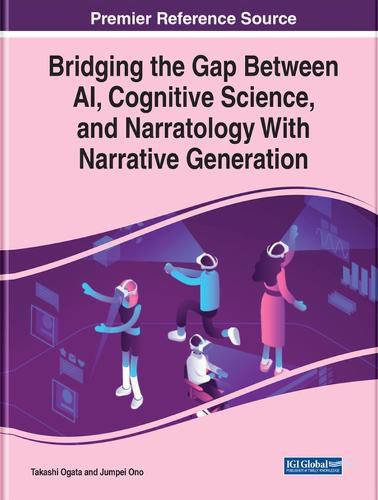Readings Newsletter
Become a Readings Member to make your shopping experience even easier.
Sign in or sign up for free!
You’re not far away from qualifying for FREE standard shipping within Australia
You’ve qualified for FREE standard shipping within Australia
The cart is loading…






This title is printed to order. This book may have been self-published. If so, we cannot guarantee the quality of the content. In the main most books will have gone through the editing process however some may not. We therefore suggest that you be aware of this before ordering this book. If in doubt check either the author or publisher’s details as we are unable to accept any returns unless they are faulty. Please contact us if you have any questions.
The use of cognitive science in creating stories, languages, visuals, and characters is known as narrative generation, and it has become a trending area of study. Applying artificial intelligence (AI) techniques to story development has caught the attention of professionals and researchers; however, few studies have inherited techniques used in previous literary methods and related research in social sciences. Implementing previous narratology theories to current narrative generation systems is a research area that remains unexplored.
Bridging the Gap Between AI, Cognitive Science, and Narratology With Narrative Generation is a collection of innovative research on the analysis of current practices in narrative generation systems by combining previous theories in narratology and literature with current methods of AI. The book bridges the gap between AI, cognitive science, and narratology with narrative generation in a broad sense, including other content generation, such as a novels, poems, movies, computer games, and advertisements. The book emphasizes that an important method for bridging the gap is based on designing and implementing computer programs using knowledge and methods of narratology and literary theories. In order to present an organic, systematic, and integrated combination of both the fields to develop a new research area, namely post-narratology, this book has an important place in the creation of a new research area and has an impact on both narrative generation studies, including AI and cognitive science, and narrative studies, including narratology and literary theories. It is ideally designed for academicians, researchers, and students, as well as enterprise practitioners, engineers, and creators of diverse content generation fields such as advertising production, computer game creation, comic and manga writing, and movie production.
$9.00 standard shipping within Australia
FREE standard shipping within Australia for orders over $100.00
Express & International shipping calculated at checkout
This title is printed to order. This book may have been self-published. If so, we cannot guarantee the quality of the content. In the main most books will have gone through the editing process however some may not. We therefore suggest that you be aware of this before ordering this book. If in doubt check either the author or publisher’s details as we are unable to accept any returns unless they are faulty. Please contact us if you have any questions.
The use of cognitive science in creating stories, languages, visuals, and characters is known as narrative generation, and it has become a trending area of study. Applying artificial intelligence (AI) techniques to story development has caught the attention of professionals and researchers; however, few studies have inherited techniques used in previous literary methods and related research in social sciences. Implementing previous narratology theories to current narrative generation systems is a research area that remains unexplored.
Bridging the Gap Between AI, Cognitive Science, and Narratology With Narrative Generation is a collection of innovative research on the analysis of current practices in narrative generation systems by combining previous theories in narratology and literature with current methods of AI. The book bridges the gap between AI, cognitive science, and narratology with narrative generation in a broad sense, including other content generation, such as a novels, poems, movies, computer games, and advertisements. The book emphasizes that an important method for bridging the gap is based on designing and implementing computer programs using knowledge and methods of narratology and literary theories. In order to present an organic, systematic, and integrated combination of both the fields to develop a new research area, namely post-narratology, this book has an important place in the creation of a new research area and has an impact on both narrative generation studies, including AI and cognitive science, and narrative studies, including narratology and literary theories. It is ideally designed for academicians, researchers, and students, as well as enterprise practitioners, engineers, and creators of diverse content generation fields such as advertising production, computer game creation, comic and manga writing, and movie production.